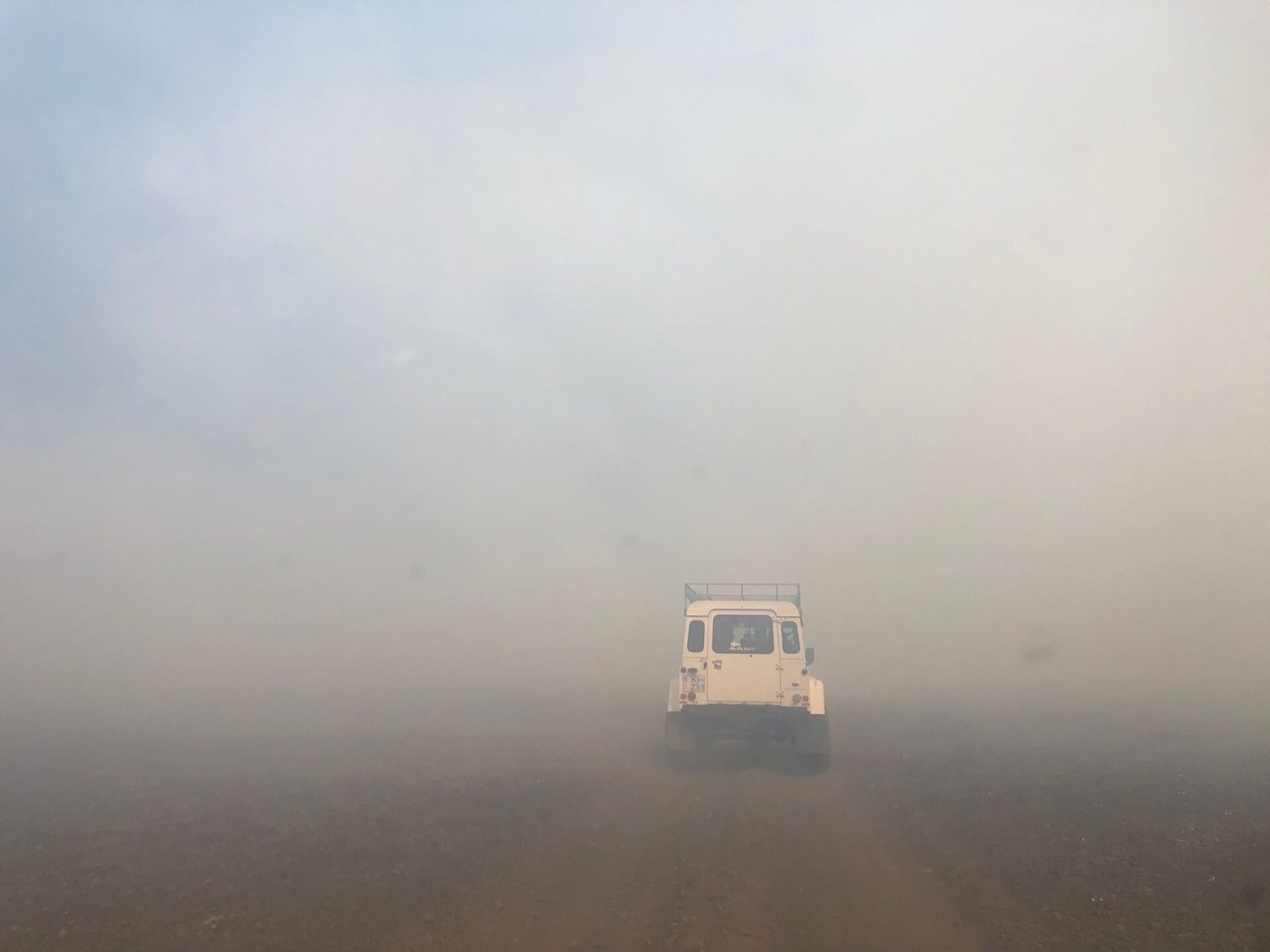Lava-ignited wildfires dynamics and emissions
- Year
- 2024
- Primary Supervisor
- Dr Evgenia Ilyinskaya <e.ilyinskaya@leeds.ac.uk>
- Institution
- Institute of Geophysics and Tectonics (School of Earth and Envrionment, University of Leeds)
- Possibility of becoming a CASE project.
- No
- Academic Supervisors
- Dr Hugh Tuffen (Lancaster University, Lancaster Environment Centre), Jim McQuaid <J.B.McQuaid@leeds.ac.uk>
- Research Themes
- Air Quality, Atmosphere and Climate, Earth Processes, Ecosystem processes, dynamics and functioning, Living World, Tectonics, volcanology and solid Earth geophysics
- Research Keywords
- Aerosols, Air Quality, Chemistry, Ecology, Geochemistry, Geology, Volcanoes
- Relevant Degree Courses
- Atmospheric science, Biology, Botany, Chemistry, Earth science, Ecology, Environmental biology, Environmental science, Geochemistry, Geography, Geological science, Geology, Geoscience, Natural sciences, Physical geography, Plant science, Soil science

Lava flows from recent volcanic fissure eruptions in Iceland (2021, 2022 and 2023) have been causing widespread wildfires of moss, and other low-growing boreal plants. This type of fire are expected to become increasingly prevalent with climate change, and the emissions can pose significant hazards, as occurred in 2023. The 2023 eruption became the largest moss fire in Iceland since systematic records began, likely influenced by an unusually long dry weather spell. Boreal fires are now releasing a growing proportion of wildfire carbon (Zheng 2023) due to global warming and changes in temperature and precipitation patterns. Despite growing recognition of the importance of lava-vegetation interactions with trees, in e.g. Hawaii and Italy (Biren et al 2020, Harris et al 2022) no study has addressed equivalent high-latitude interactions. The characteristics of wildfire emissions from low-growing, non-vascular plants (such as mosses) are likely to have important differences, for example due to differences in surface area in contact with the lava, differences in organic compounds, and inorganic compounds, such as heavy metals. Furthermore, there is a gap in knowledge on the influence of forcing mechanisms (e.g. different types of lava), and external conditions including wind and precipitation.
This PhD project will investigate the characteristics and emissions of these understudied lava-ignited moss wildfires, as detailed below. The project will involve a combination of fieldwork (expected field sites: Iceland, Hawaii) and laboratory work. It is suitable for candidates with a variety of backgrounds in natural and physical sciences.

Project parts
We expect that each part of the project will generate at least one scientific publication.
Part 1: Chemistry of emissions from lava-ignited wildfires. We hypothesize that the lava-vegetation interaction could be volatilising and/or stabilising compounds in forms not found in other volcanic or wildfire emissions. You will investigate the abundances of environmentally-important major (e.g. carbon dioxide, sulphur dioxide, carbon monoxide) and trace species (e.g. lead, arsenic, selenium) that result from interaction of volcanic emissions and wildfire smoke. You will collect samples at active eruptions and analyse them in the laboratory to investigate how the chemical composition of gas emissions from lava flows is modified through combustion of vegetation. In the relatively unlikely event of no fieldwork at active eruptions, we already have a collection of existing samples.
Part 2: Lava-vegetation interactions that lead to wildfires. You will conduct combustion experiments to simulate interactions between different types of lava flows (e.g. pahoehoe, a’a, different temperatures) with different types of plants (e.g. moss, trees) and conditions (e.g. humidity, air movement). This will constrain physical and chemical processes of the combustion process and nature of the associated emissions.
Part 3: Local conditions that lead to widespread lava-ignited wildfires. You will map out the extent of recent wildfires in Iceland (and potentially elsewhere) using aerial imagery and satellite data, relate this to the spatial patterns of vegetation type, and analyse it in combination with meteorological data. The aim is to understand why some lava flows, such as in 2023, led to a much more extensive wildfire than others (e.g. 2021) despite similarities in vent position and characteristics of the emitted lava. This will contribute to the broader goal of mapping out the potentially expanding geographical extent of hazardous lava-vegetation interactions towards higher latitudes.
Field sites and methods
Volcanic systems on the Reykjanes peninsula in Iceland are currently in an active phase, with frequent eruptions (2021, 2022, 2023, and continuing unrest). You will do fieldwork at an active eruption supported by our collaborators at the Icelandic volcano observatory. It is possible that a fieldwork opportunity may also arise at Kilauea volcano in Hawaii if lava starts flowing in a vegetated area.
In the field, you will learn to use a variety of sampling methods for airborne emissions, and for sampling lavas. You will also learn to use a variety of laboratory methods, including clean lab work; ion and gas chromatography, thermogravimetric analysis, and ICP-MS mass spectroscopy. You will work with satellite and aerial imagery; and conduct combustion experiments. You will integrate field and laboratory data with spatial analysis of wildfire conditions.
External collaborators: Icelandic Institute of Natural History, United States Geological Survey, Icelandic Met Office
